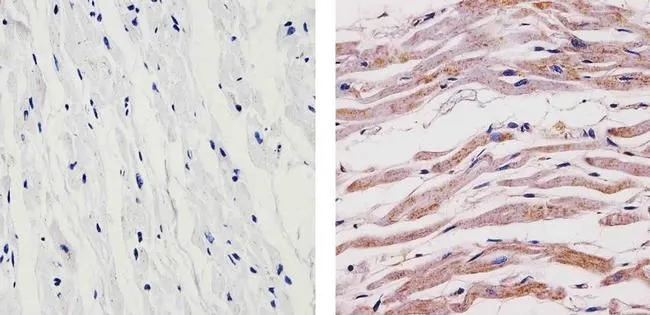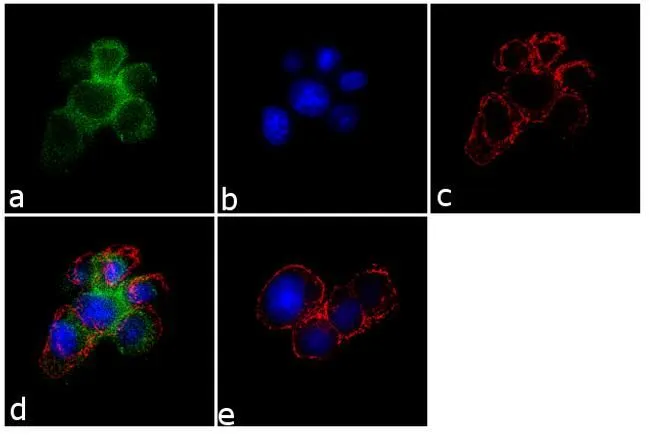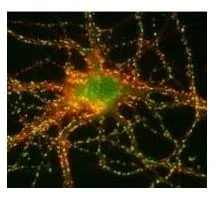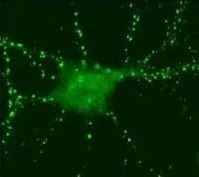
IHC-P analysis of human heart tissue using GTX23344 SynGAP antibody. Right : Primary antibody Left : Negative control without primary antibody Antigen retrieval : 10mM sodium citrate (pH 6.0), microwaved for 8-15 min Dilution : 1:100
SynGAP antibody
GTX23344
ApplicationsFlow Cytometry, ImmunoFluorescence, ImmunoPrecipitation, Western Blot, ImmunoCytoChemistry, ImmunoHistoChemistry, ImmunoHistoChemistry Paraffin
Product group Antibodies
ReactivityHuman, Mouse, Rat
TargetSyngap1
Overview
- SupplierGeneTex
- Product NameSynGAP antibody
- Delivery Days Customer9
- Application Supplier NoteWB: 1 microg/ml. ICC/IF: 2 microg/ml. IHC-P: 1:100. FACS: 3-5 microg/106 cells. *Optimal dilutions/concentrations should be determined by the researcher.Not tested in other applications.
- ApplicationsFlow Cytometry, ImmunoFluorescence, ImmunoPrecipitation, Western Blot, ImmunoCytoChemistry, ImmunoHistoChemistry, ImmunoHistoChemistry Paraffin
- CertificationResearch Use Only
- ClonalityPolyclonal
- Concentration1 mg/ml
- ConjugateUnconjugated
- Gene ID240057
- Target nameSyngap1
- Target descriptionsynaptic Ras GTPase activating protein 1 homolog (rat)
- Target synonymsGm1963; neuronal RasGAP; ras GTPase-activating protein SynGAP; ras/Rap GTPase-activating protein SynGAP; Sy; synaptic Ras GTPase-activating protein 1; synaptic Ras-GAP 1; Syngap
- HostRabbit
- IsotypeIgG
- Protein IDF6SEU4
- Protein NameRas/Rap GTPase-activating protein SynGAP
- Scientific DescriptionThis gene encodes a Ras GTPase activating protein that is a member of the N-methyl-D-aspartate receptor complex. The N-terminal domain of the protein contains a Ras-GAP domain, a pleckstrin homology domain, and a C2 domain that may be involved in binding of calcium and phospholipids. The C-terminal domain consists of a ten histidine repeat region, serine and tyrosine phosphorylation sites, and a T/SXV motif required for postsynaptic scaffold protein interaction. The encoded protein negatively regulates Ras, Rap and alpha-amino-3-hydroxy-5-methyl-4-isoxazolepropionic acid receptor trafficking to the postsynaptic membrane to regulate synaptic plasticity and neuronal homeostasis. Homozygous mutations result in early post-embryonic lethality, while heterozygous mutant mice display a variety of phenotypes that include learning and memory defects, hyperactivity, and audiogenic seizures. [provided by RefSeq, Nov 2016]
- ReactivityHuman, Mouse, Rat
- Storage Instruction-20°C or -80°C,2°C to 8°C
- UNSPSC12352203



